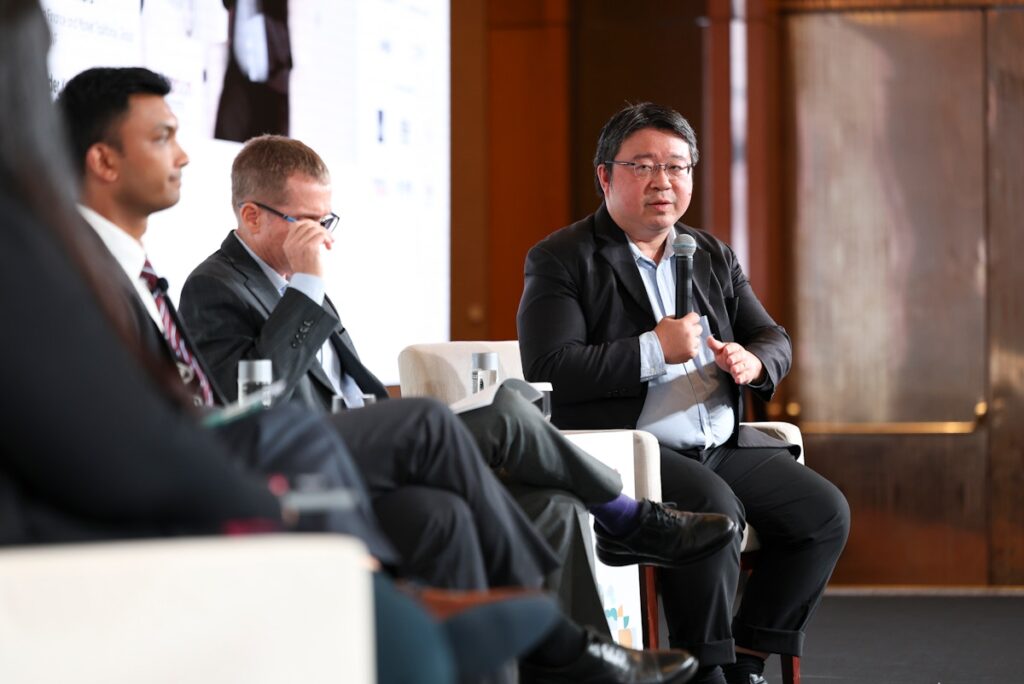Carbon markets are essentially “about countries collaborating with each other to unlock emissions reduction opportunities that would not have occurred otherwise,” said Benedict Chia, director-general of climate change at the republic’s National Climate Change Secretariat (NCCS) on Thursday.
He was speaking on a panel at Asia Carbon Summit, under the city-state’s flagship energy event Singapore International Energy Week.
“If a country doesn’t have a good understanding of how much it’s emitting to a level of certainty, then the foundation on which you’re building this collaboration is going to be flimsy,” said Chia. “The other important aspect is the country needs to have a robust emissions target, and it needs to have a clear understanding of how it’s going to get to the target.”
The “crux of the issue which bedevils a lot of cooperation,” he said, is that “countries are not sure what they can correspondingly adjust for.”
A corresponding adjustment is a transfer of emissions reductions across countries’ greenhouse gas inventories to prevent double counting. It is required under Article 6 of the Paris Agreement, which outlines the framework for countries to meet their national climate targets through trading carbon credits.
Earlier this month, the UN carbon body approved a standard for project methodologies and carbon removals to circumvent the bureaucratic COP process, which stunted the progress made on carbon crediting rules last year, in order to operationalise Article 6.4 – a key mechanism that will enable firms to trade credits linked to projects that reduce emissions in other countries.
“Some of the very early countries that I spoke to had this mindset that ‘I will only decide whether I can sell you the credit when I’m certain that I can meet my target,’ which will be in 2028 or 2029 – which, I think, completely defeats the purpose of carbon markets,” said Chia.
Singapore-based carbon trading platform ACX chief executive Thomas McMahon, who spoke on a panel following Chia’s, said that after COP26 in Glasgow, the more well-defined Article 6 rules gave governments greater control over their carbon assets, leading some countries like Indonesia and Papua New Guinea to impose moratoriums on carbon credit issuances to evaluate how much rainforest offsets they were producing and the amount they need to meet their nationally determined contributions (NDCs).
Both countries are poised to lift their moratoriums by year-end. In the meantime, Papua New Guinea has become one of the two nations to enter into a definitive agreement with Singapore to trade carbon offsets under Article 6.2. But the republic continues to struggle with finding supply for eligible credits, which led it launch a new public-private alliance in July.
“Neither of those [host] countries have produced carbon credits with corresponding adjustments attached to them. There’s nothing wrong with that, but nobody expected that to happen. So it’s a problem in the supply chain and the accounting chain, so that needs to be worked out,” McMahon said.
Negotiations at COP29 are expected to clarify the circumstances under which a carbon project host country can revoke authorisations for country-to-country carbon trading deals under Article 6.2, which is a risk to project developers and buyer countries that Chia brought up last month.
Driving standardisation in a decentralised market
Chia mentioned that he sees further room for standardisation in the voluntary carbon markets, beyond standardised contracts, which pool credits across multiple projects that meet certain quality requirements, with the aim of derisking them for investors.
“Take, for examples, the entire Article 6 process in terms of how units are generated, how they are being transacted and the identifiers that go along with them. If you look strictly at what has been agreed at the UNFCCC, it doesn’t go into all these details. It leaves a lot of flexibility for countries and parties to decide amongst themselves what actually works best,” said Chia.
“While that flexibility is good. we think that there is value in driving greater standardisation. So Singapore, together with Gold Standard and Verra, is putting together what’s called an Article 6 playbook, which tries to drive greater standardisation, harmonisation and consistency in processes.”
Chia said that the playbook was reviewed by some key countries and non-governmental organisations at the Bonn Climate Change Conference earlier this year and that they are planning to do a “fuller study” at the upcoming COP.
He shared that NCSS is also hoping to launch some work it has been doing alongside “one of the international organisations” – which Chia did not name – to come up with “greater standardisation and authorisation forms” that will help insurers of carbon projects better understand and reduce the risks involved at next month’s climate summit in Azerbaijan.
When asked about whether Asean should create its own carbon standard, Chia said that he sees value in that, given that some of the generic emissions factors, methodologies and tools to assess additionality from existing standards do not apply to the unique challenges faced in the region.
However, it is a more open-ended question as to who is best-placed to develop the standard, said Chia.
“If you get some organisation that is based in Asia driving it, it’s a plus. As to what this organisation is, to be quite honest, I don’t have an answer,” he said.
Last August, a new Asia-based carbon standards body called Asia Carbon Institute launched in Singapore and Hong Kong. Alongside two Thai partners, it pushed for a “neutral carbon standard” for Asean, though no further details have been announced since the press release.
In July, Malaysia also mooted a regional standard for carbon projects, ahead of its upcoming Asean chairmanship next year. The country’s environment minister told Eco-Business then that he has commenced talks with his Thailand counterpart with a view to creating an Asean carbon framework.

